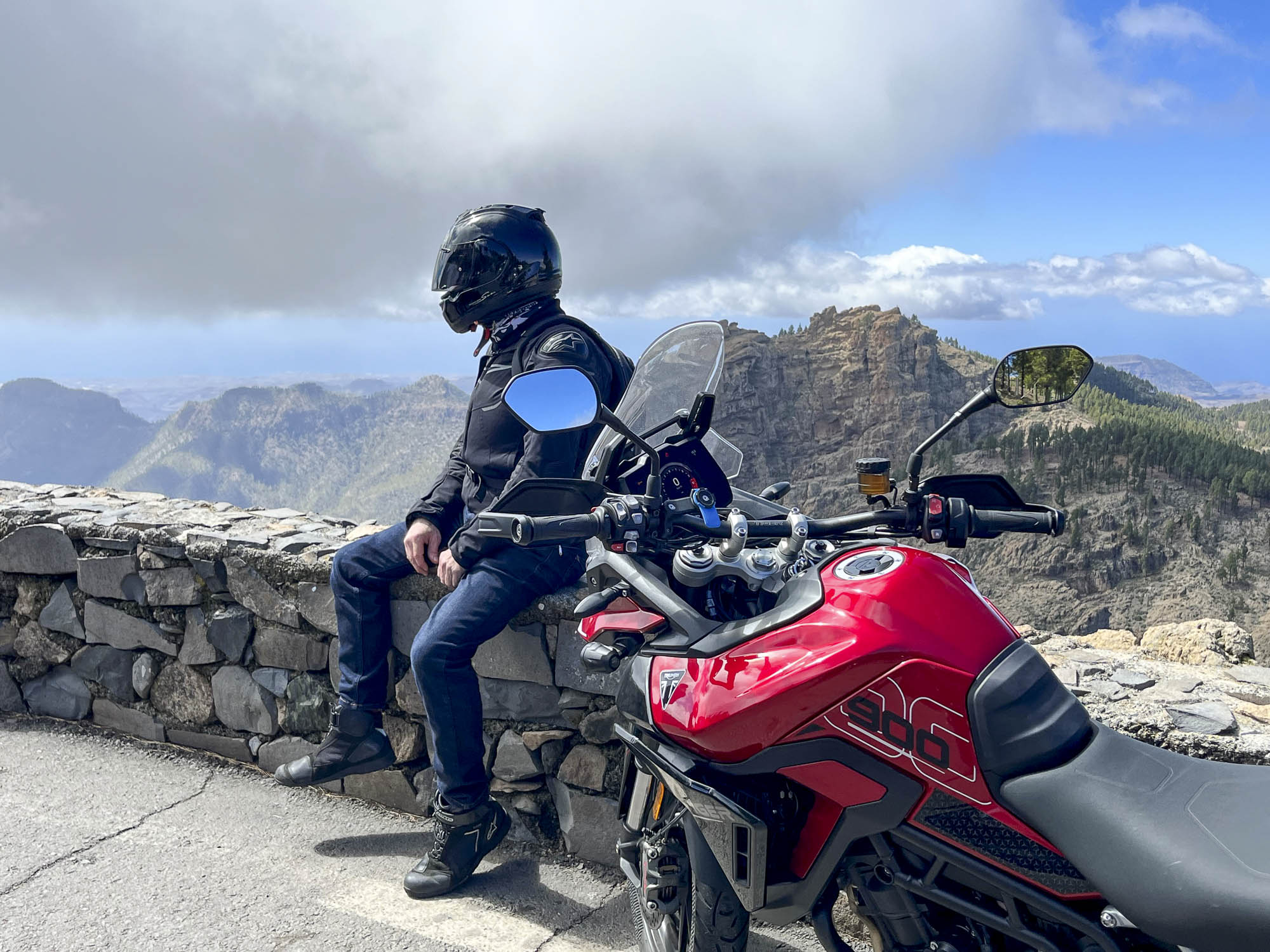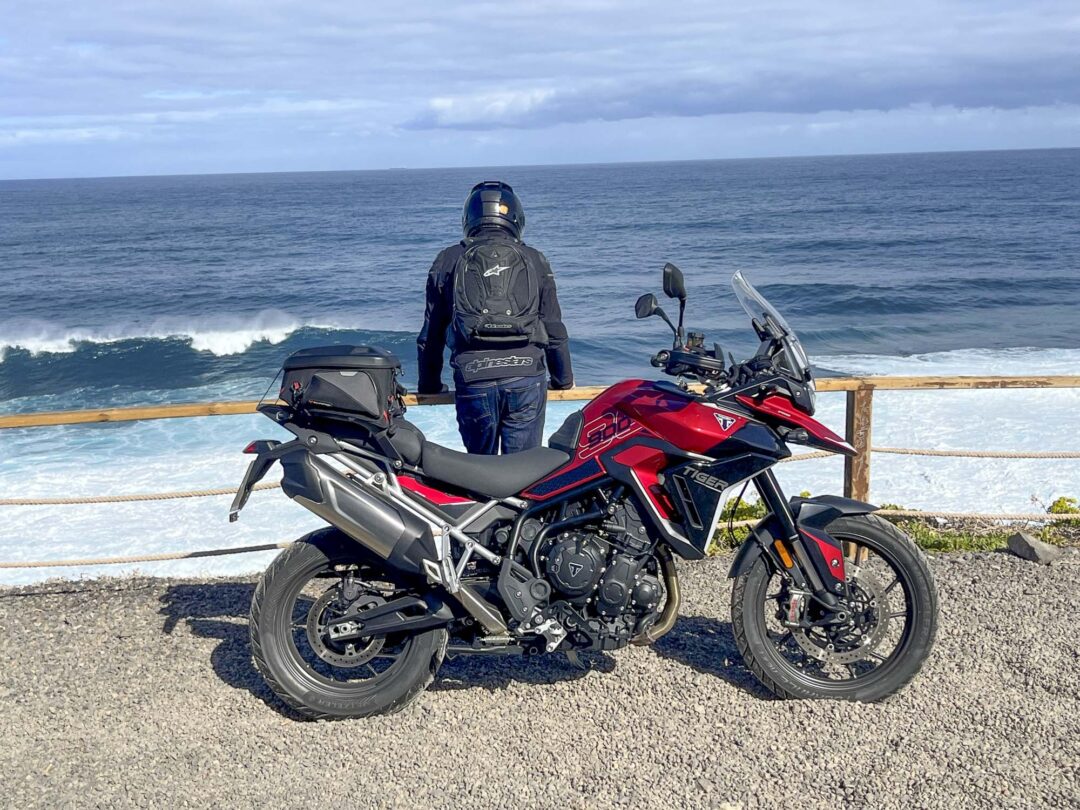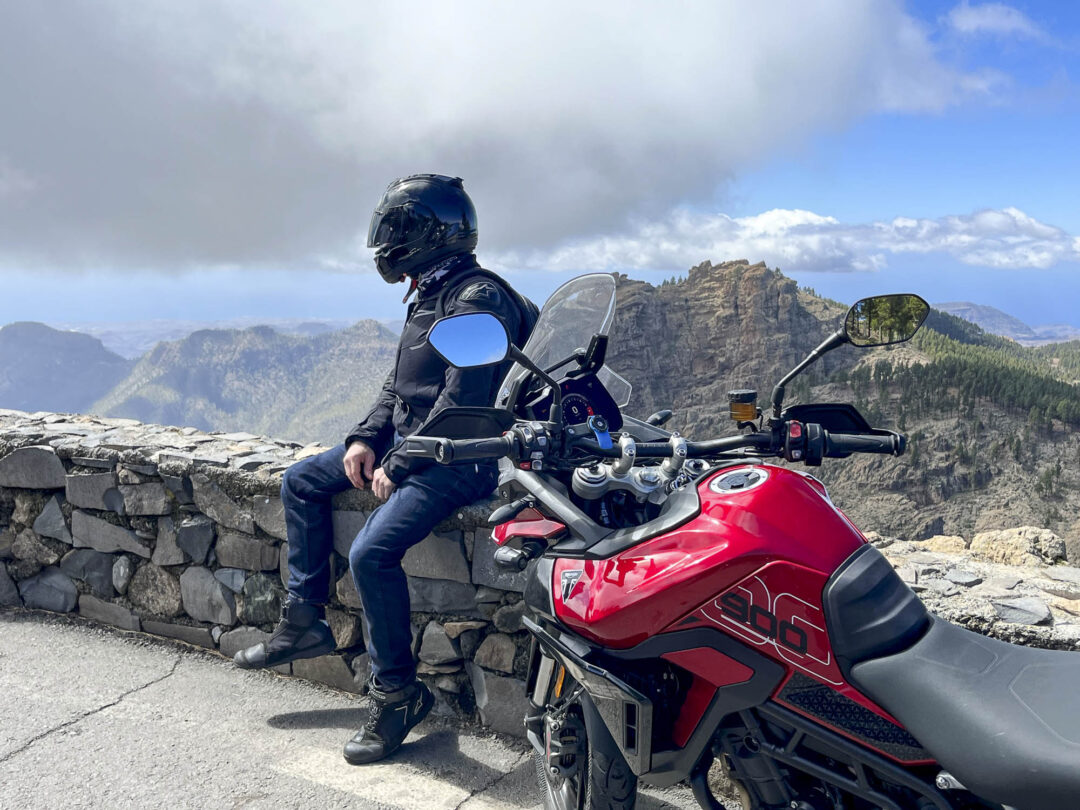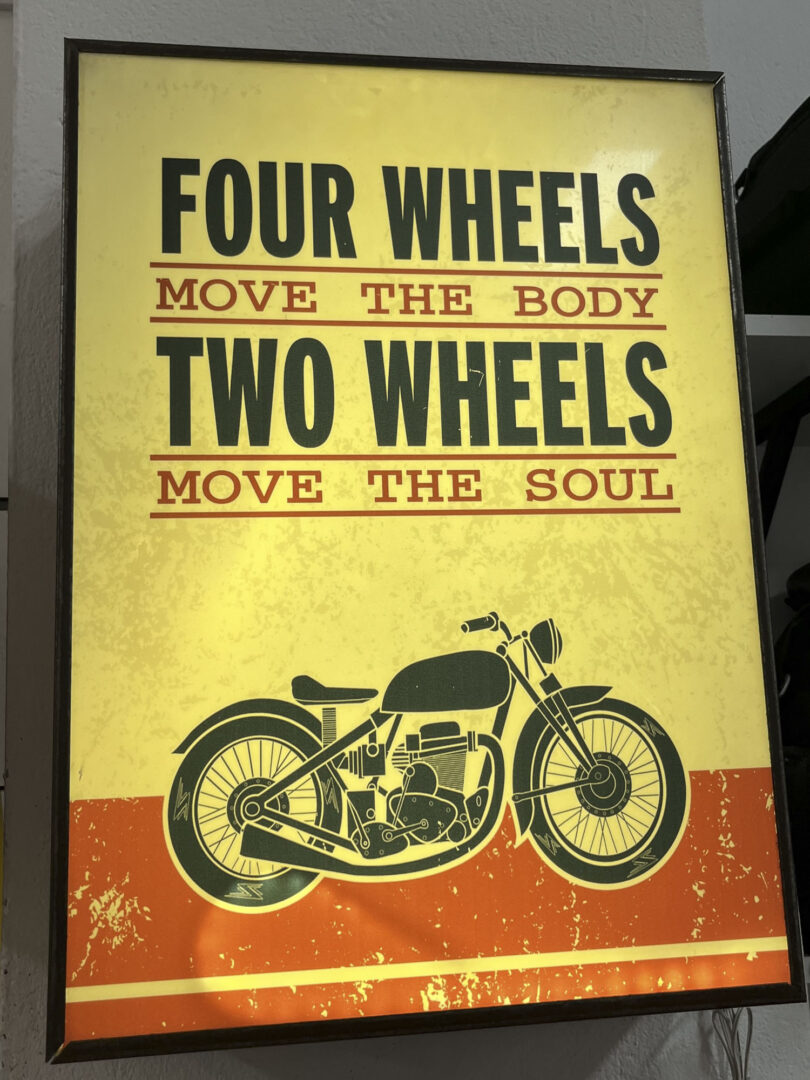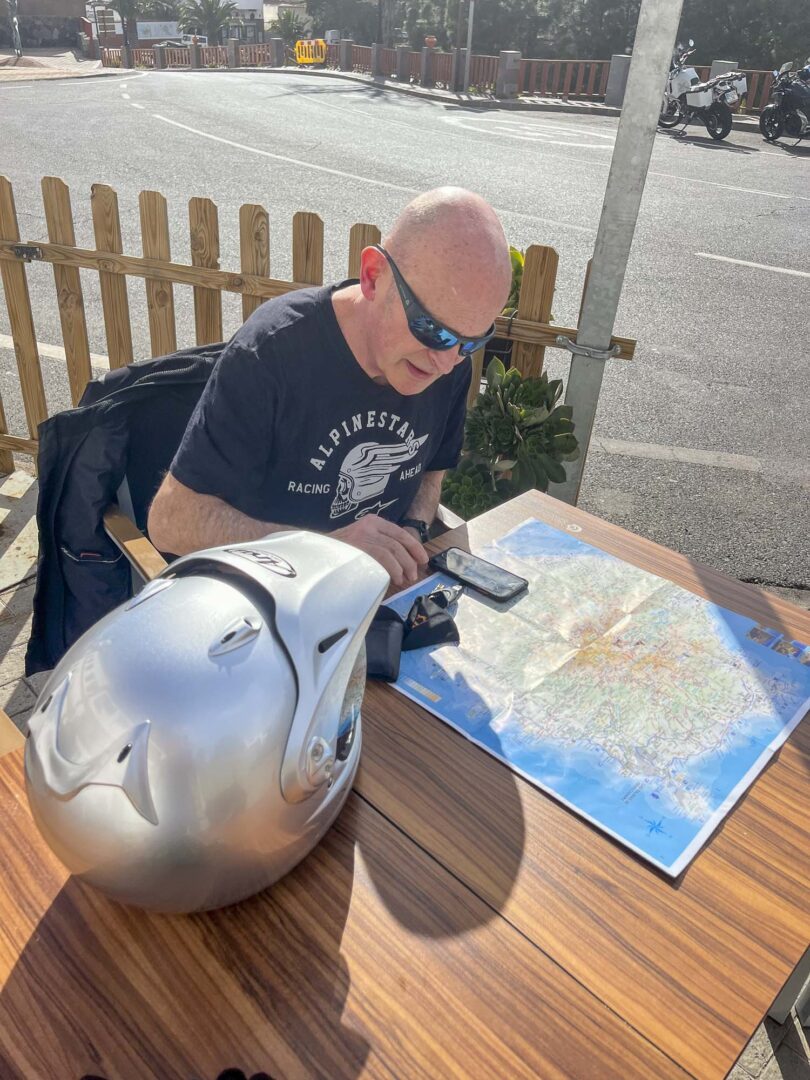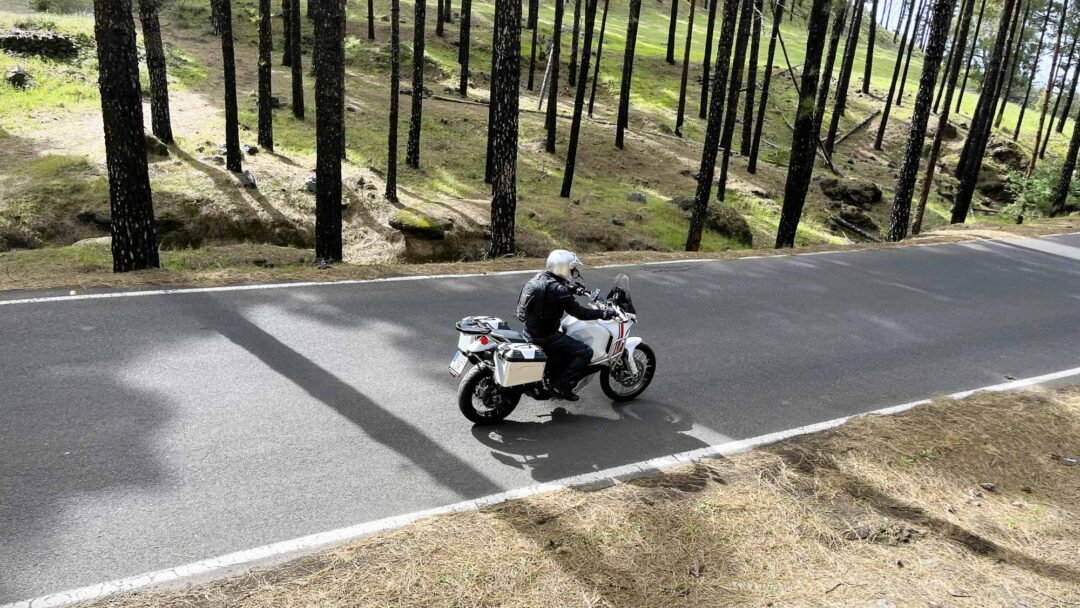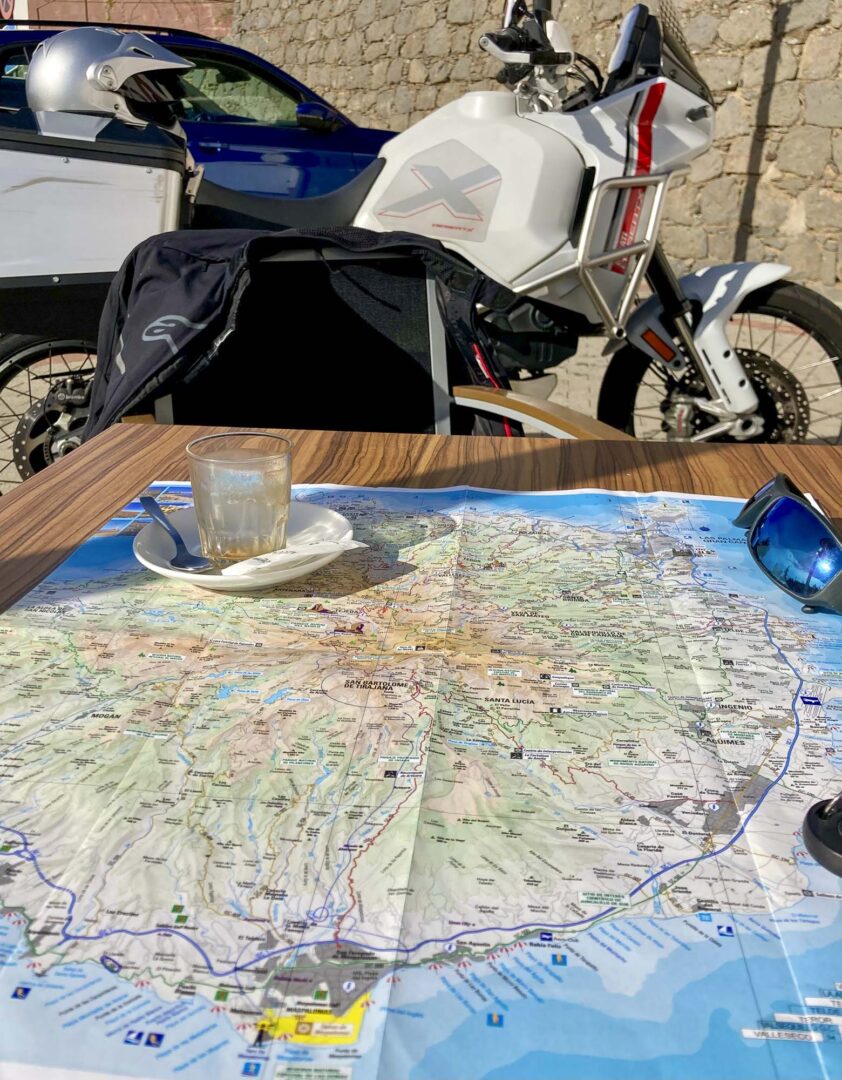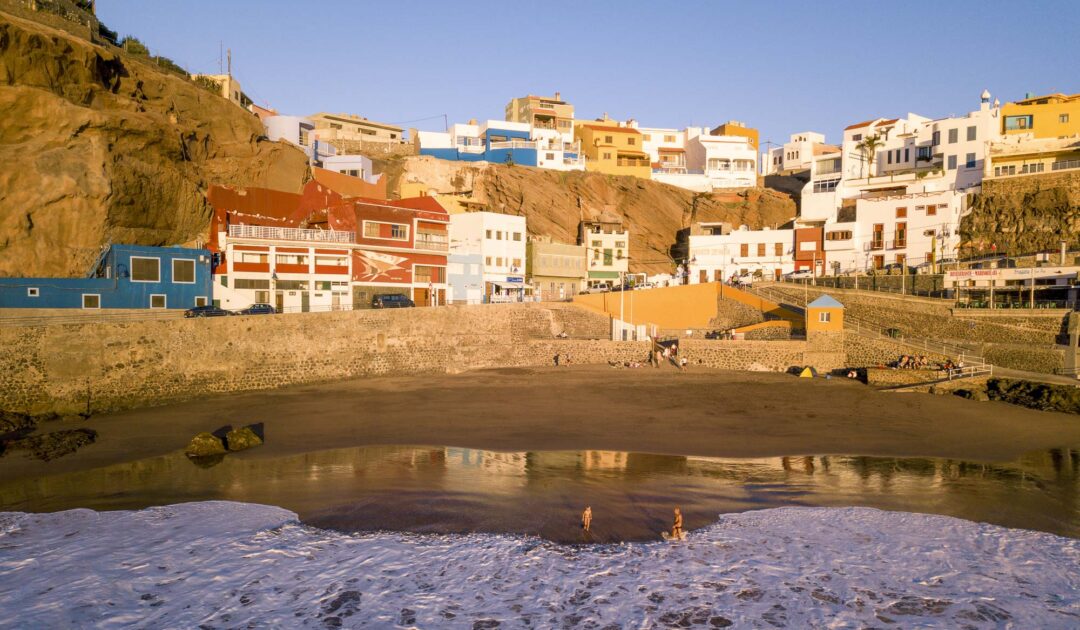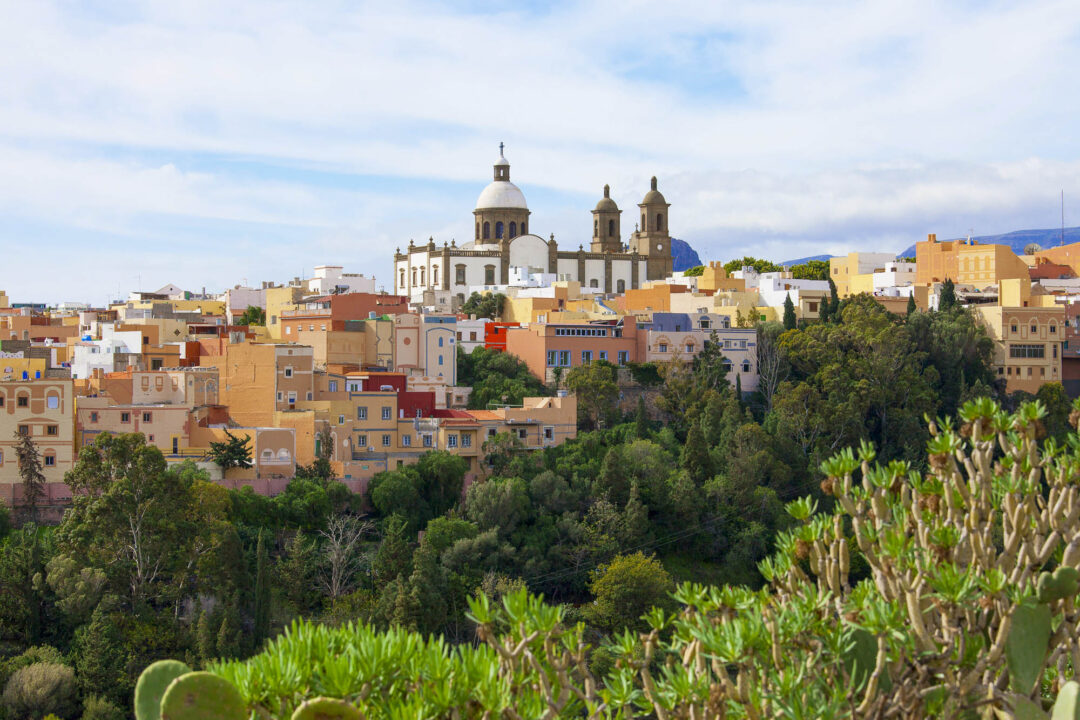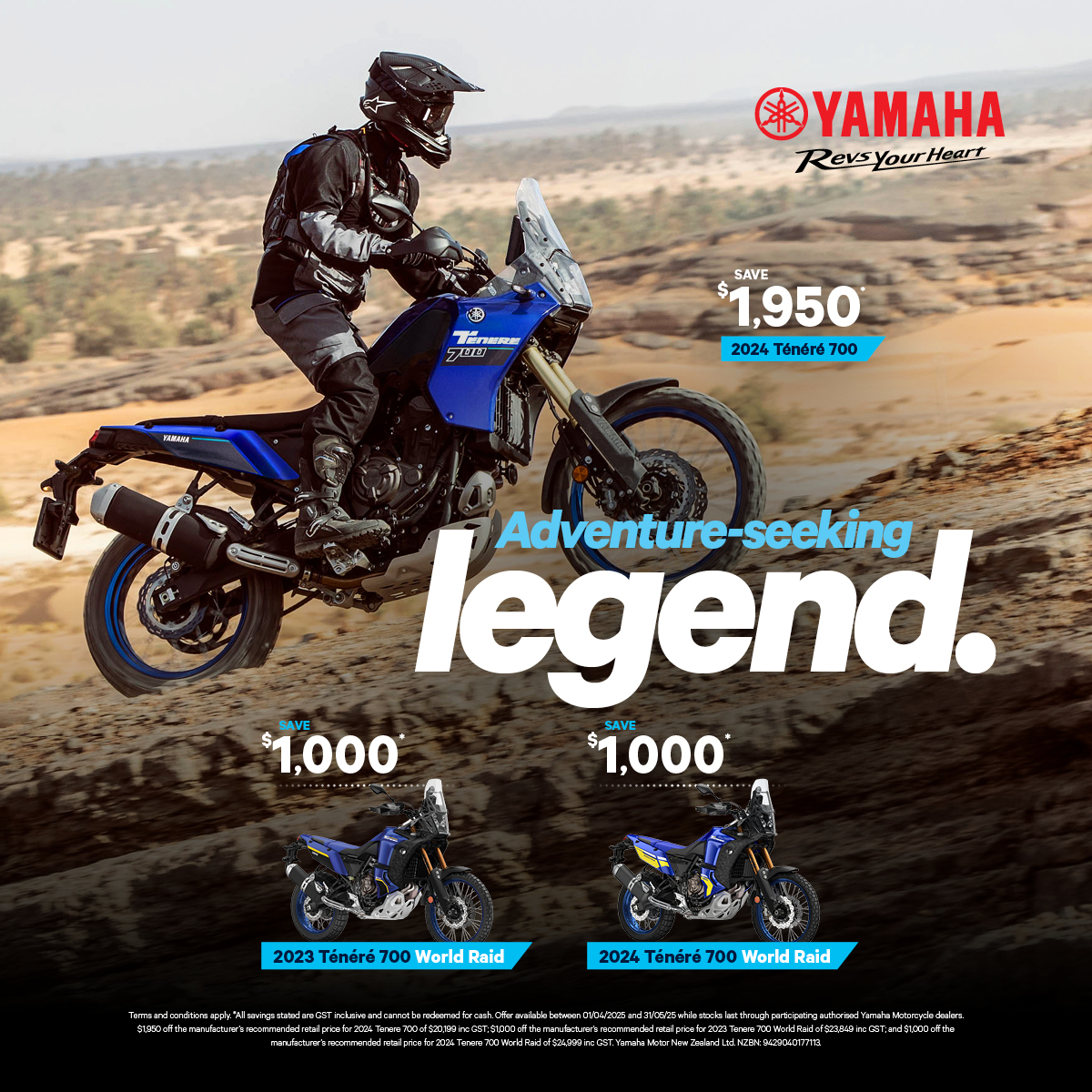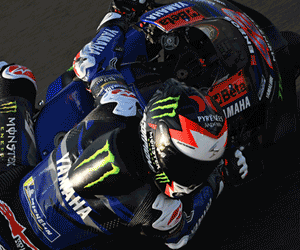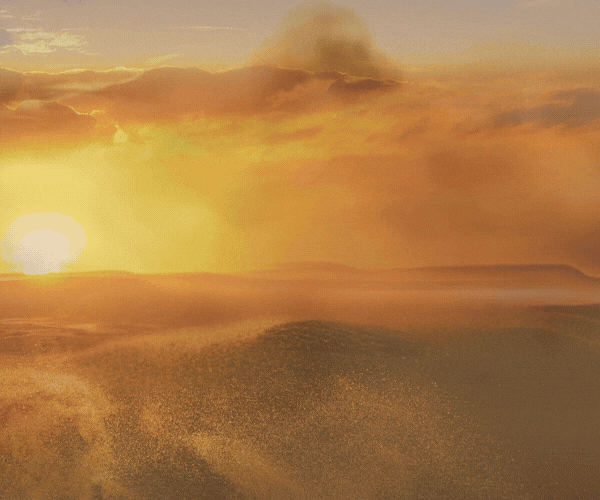Words: Jim Bowen Pics: Chris Taylor
Heading to Europe this winter? Think about a bike rental on the Canary Islands.
You know the feeling. It’s been raining for weeks, and you’re doomscrolling through weather apps in an effort to find one with an optimistic outlook. It can be a frustrating and futile distraction. As the winter months drag on, the stoic will to endure the elements and get out with their mates for a spot of very fresh ai,r but many of us keep our bikes under wraps and will sit it out until the veil of winter has lifted.
If you find yourself in Spain or pretty much anywhere in Western Europe and need some quality motorcycle time, there is a solution that is not too far away. The Canary Islands. The eight-island archipelago just off the coast of Morocco is well known for providing the most reliable winter weather available via a short flight, and has been a popular holiday destination for sun-starved Brits, German and Dutch tourists for many years. However, the islands are less well known as a destination for affordable bike rentals and endlessly entertaining, well-maintained roads. I opted to dodge the British weather and head out early in March to Gran Canaria, the third largest of the islands, for a few days of sun and switchbacks.
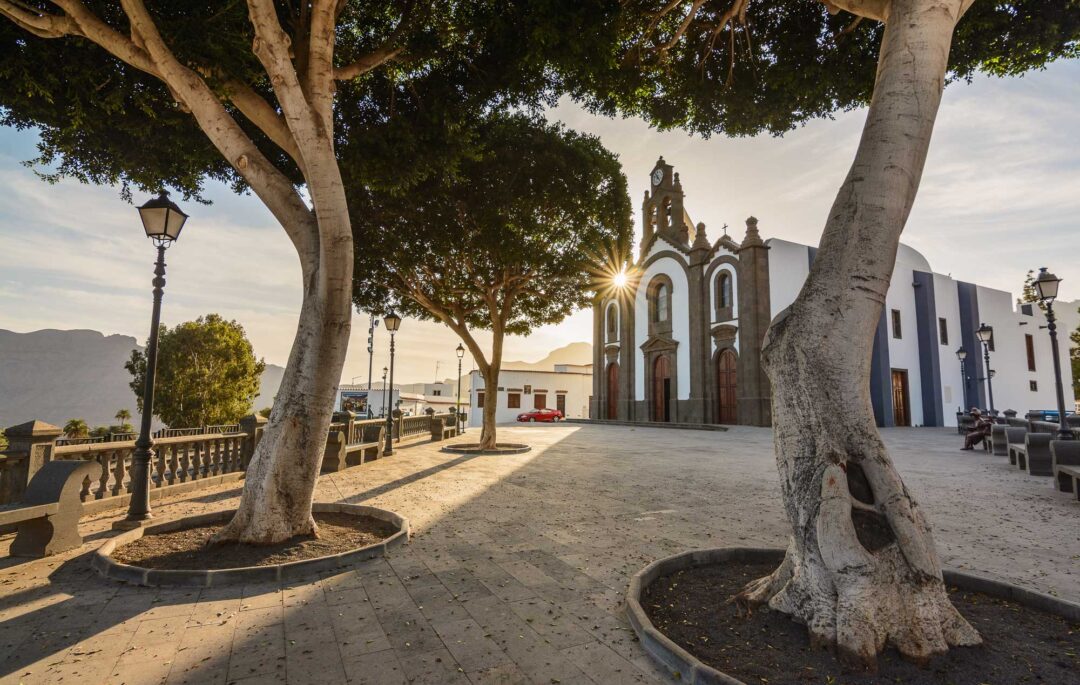
Why Gran Canaria?
As with the other islands, the chances of seeing rain are super slim, and cloudless days are common, with the average temperature through December-April being around 20C and 23- 24C through June-September, though it can run a few degrees higher in the south. Direct flights from the UK are four or so hours, depending on your airport, and cheap if you shop around. The Canary Islands are cheaper than mainland Spain as they are classified as ‘Outermost Regions’ and exempt from VAT. The icing on the cake is cheap unleaded so even fuel stops can leave you feeling quite smug.
Economics aside, Gran Canaria is a stunning little place with fantastic local food and amazing beaches. Being circular in shape and only 50km across, distances are never an issue. Use the eastern motorway to get from north to south in not much more than an hour and spend all day exploring the scenic routes at leisure. The majority of tourists will head for the most northerly (Las Palmas) and southerly (Maspalomas) resorts, leaving the fun roads in between ideally quiet for riding.
I wanted to try a couple of adventure bikes back-to-back and I found that Canary Ride, a well-established rental specialist, had both in stock. They are situated in central Las Palmas near my base for the trip with a comprehensive choice of bikes from Honda and Ducati plus select new models arriving now from Triumph and BMW. They also have an HQ in Tenerife for those who want to head over to the largest island.
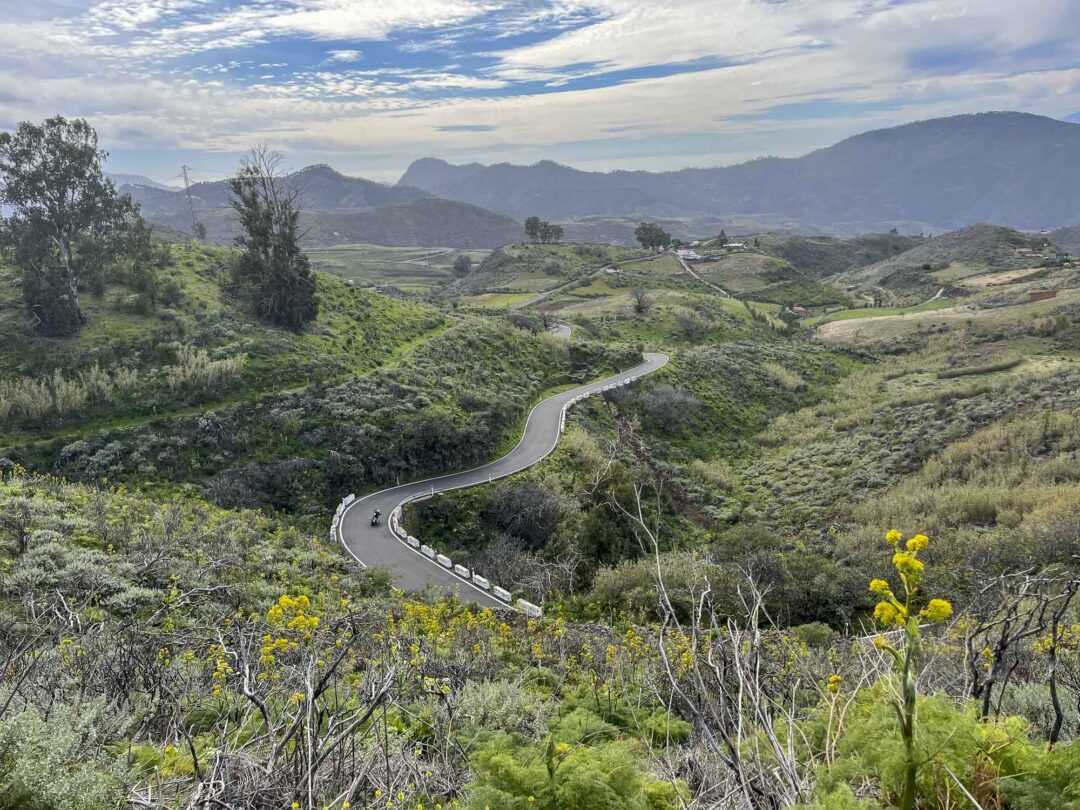
On The Road
Aside from the motorway which covers two thirds of the island, main roads or highways are split into major (red), secondary (green) and local (yellow). Most of the major routes are in excellent condition, race track smooth in many cases with secondary also well surfaced. Some of the smallest rural roads can be rough or loose enough to activate the ABS but potholes are not an issue.
Cycling is popular as, bizarrely, is riding on the motorway. An uncomfortable sight that takes some getting used to, but the only other abnormality could be the occasional HGV on the hairpin routes but they tend to blast the horn when approaching the tighter turns. Keep an eye out for distracted tourists in rental cars but aggressive driving and road rage is not an issue. There are static speed cameras on major roads and potential for mobile units throughout as well as warning signs for police helicopters and drones. Concentration is a must as there are unforgiving drops at altitude all across the island interior.
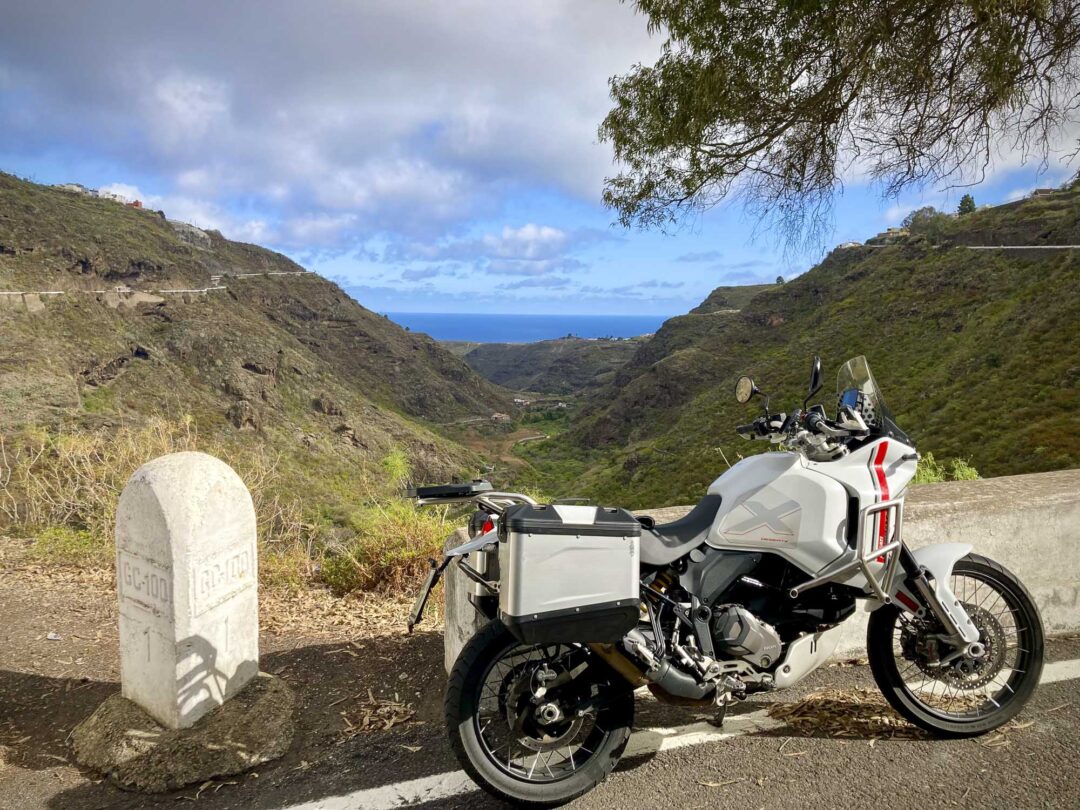
Pre-Ride Rental
The rental centre in Las Palmas has around thirty current models to choose from (twenty in Tenerife) though booking in advance is recommended, particularly if you want a premium model, as they are the most popular. Conveniently, there is no mileage limit and each bike is fitted with a phone holder/charger. If you are planning on island hopping or staying at multiple locations there are hard and soft luggage options as well as a large range of summer riding kit – a bonus if you prefer not to drag your kit all the way from NZ.
Bikes are split into three categories – Group A2 (300cc +) from €80 per day, Group A (750cc +) from €85 per day and Premium (750cc +) from €110 per day. €1 = NZ$0.56 at time of writing.
The rental handover process is friendly and efficient, taking no more than thirty minutes including an introduction to the key operating functions of the bike which, in my case, was a very well-maintained Ducati Desert X fitted with hard cases which, despite its appearance, had already covered over 55,000km.
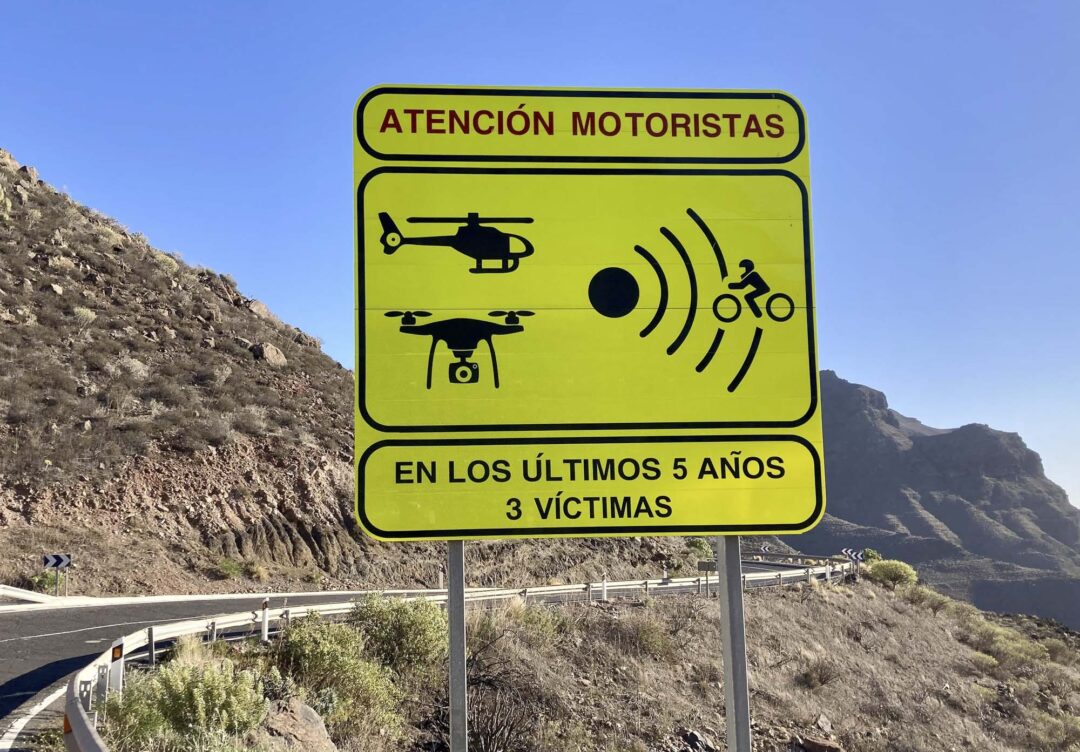
The Ride
It’s easy to plan a circular route, particularly in the north where there is a greater concentration of roads, or just ride from one landmark to the next, knowing that you are never much more than a couple of hours from your accommodation. I pointed the Desert X west from Canary Ride and covered the last stretch of coastal motorway, taking in the quirky surf communities of Galdar and Agaete, where I picked up the GC200. This is an unmissable, mainly coastal mountain road that winds down to the beach at Mogan in the south west and is spectacular in either direction, especially as the sun is setting.
The Ducati has such presence and, in the right hands with appropriate tyres, could no doubt decimate large sections of mountain trails or sea level dunes with ease. In reality, this was a tarmac adventure, and the only hope of stretching its legs would be on the faster main roads and motorways. While the off-road sized front wheel coped well with the constant dropping in and out of tight turns, it did occasionally feel tall and weighty in more ponderous 1st and 2nd gear uphill corners. Along with 5th and 6th gear on most of the mountain roads, five of the six rider modes were superfluous as it managed all situations well enough in Sport mode – that crisp throttle response driving the bike out of exits with a degree of urgency.
From the south I took the GC1 motorway for a spot of high-speed touring back to the top and started again, taking in the sights while zig-zagging from town to town, alternating between the major and minor roads. The scenery changes frequently as you pass through the banana plantations and up to the small towns with quirky cave dwellings, arid volcanic rock formations with copious cactus and aloe vera plants. Despite its proximity to northern Europe, the landscape can give the impression that you are a very long way from home.

One of the benefits of rentals is that you can easily move from bike to bike so after a couple of days on the Ducati I returned to Canary Ride to swap it for a shiny new 2024 Triumph Tiger GT Pro which had just been added to the fleet. I opted to leave the seat set in the low position, as combined with the easily adjustable screen, it offered useful protection from the occasional very strong winds that can whistle up the mountain valleys.
The Triumph lacked the Ducati’s sense of occasion and was less engaging, but it did a better job of disguising its weight and felt more at home in these conditions with its smaller front wheel and extra cylinder. Perfect fuelling combined with instant low-end grunt meant that it could handle tricky switchbacks without mid-corner down changes or feathering the clutch.
From the sand dunes of the south via the mountain lakes and into the pine forests to the central viewpoint of Pico de Las Nieves at 2000m, the roads are constantly playful and occasionally challenging when steep and tight turns are combined. An unexpected ten-degree temperature drop at the cloudy summit caught me by surprise and pressed the heated seat and grips into action. Even here, where the temperature is usually mid-twenties in early March, it’s worth packing an extra layer.
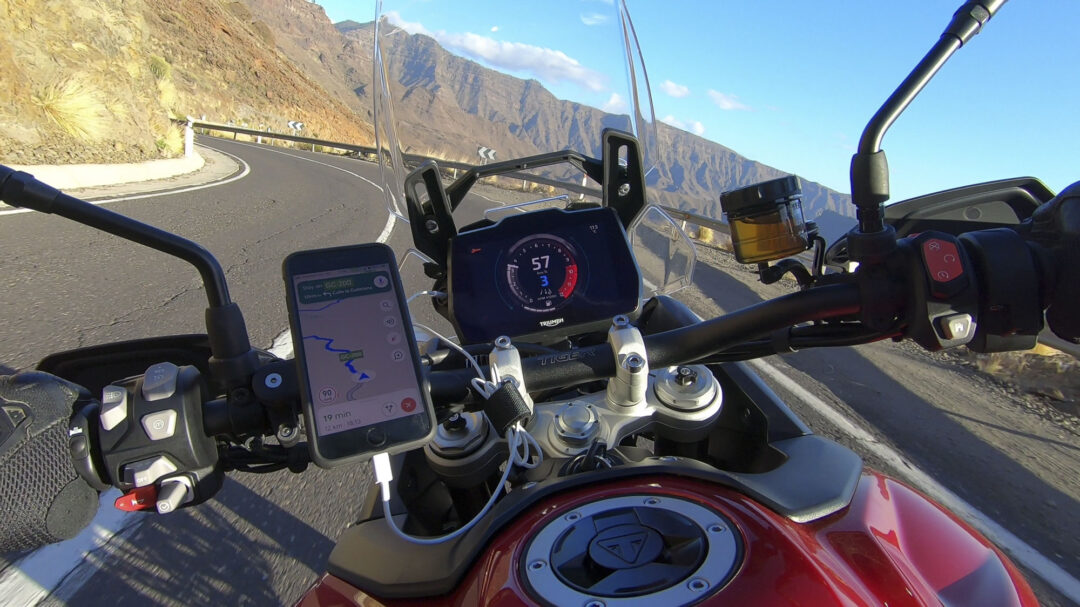
Summary
Gran Canaria is the only place in Europe with a climate suitable for growing coffee. That says plenty about the weather. If you want to escape the gloom of home and enjoy a few days of summer riding without breaking the bank, this is the most logical destination. The roads are fun, and the compact nature of Gran Canaria means that you can cover plenty of ground even on a two-day rental, though four or more is ideal at a leisurely pace. You don’t need 100bhp to have a great experience either, a mid-sized twin would provide more than enough for most riders and scenarios. Whatever you choose will certainly put a smile on your face.
Thanks to the good people at Canary Ride. Check out www.canaryride.com
Getting there
Non-peak direct return flight NZ$425+ from Gatwick and NZ$630+ from most other airports
Coach from airport to Las Palmas NZ$10
Taxi from airport to Las Palmas NZ$75
Family car rental from airport / drop at Las Palmas approx. NZ$75+
Bike rental from NZ$140 per day
Staying there
Average hotel room NZ$175 per night
Apartments & Airbnb properties plentiful
$1 = €0.56
Unleaded 95 average $2.25 per litre
Local beer from $2.50 per pint
Average annual temp 24C
80 beaches

